Album Photos de Nogupa
Membre depuis le 08 Octobre 200728
Photos
Photos
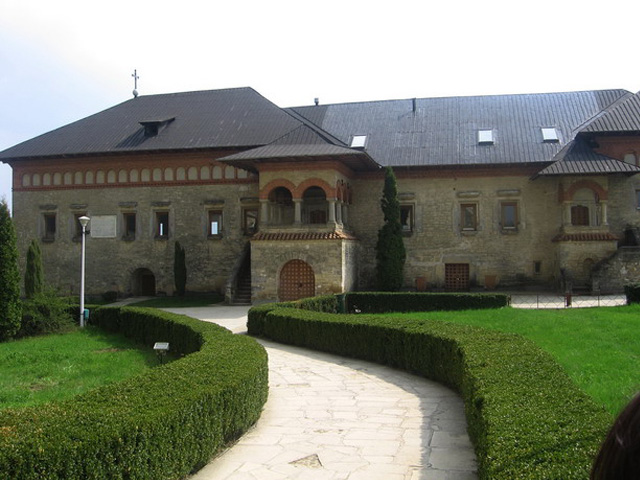 Within the Cetăţuia monastery there have been built rooms for the monks, a bathroom, a kitchen, cellars and a starets' house with a dining hall - Iaşi, Romania
Within the Cetăţuia monastery there have been built rooms for the monks, a bathroom, a kitchen, cellars and a starets' house with a dining hall - Iaşi, Romania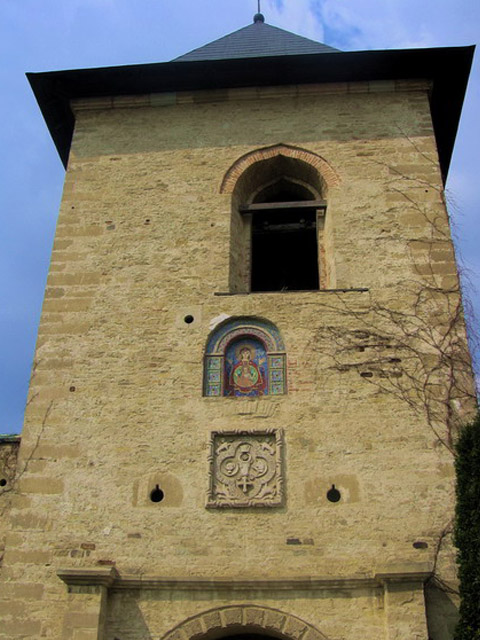 Cetăţuia Monastery (the end of the 17th century), Iaşi, north-eastern Romania
Cetăţuia Monastery (the end of the 17th century), Iaşi, north-eastern Romania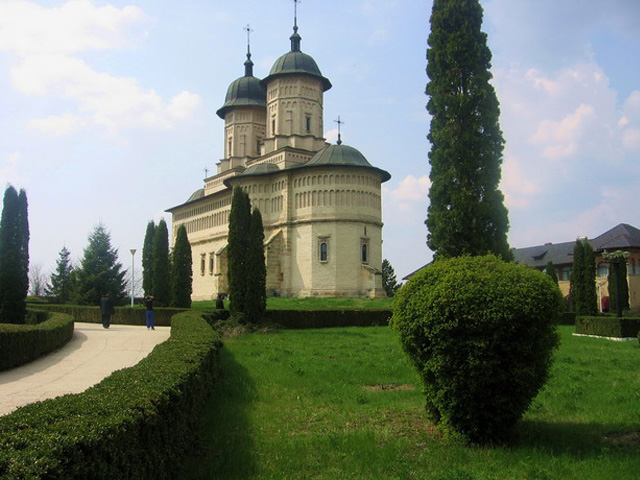 The founder of the Cetatuia Monastery was Prince Gheorghe Duca. The construction works started in 1669 and were completed in 1672. The church was surrounded since the beginning by tall stone walls, with ramparts and a sentinel's path, entrance and corner towers. A special place is the palace destined to the lodging of the prince, a fortified building characteristic to the XVIIth century and the kitchen or, according to other opinions, the Turkish bath which is the only construction of this kind that has been preserved within a monastic ensemble. The bell tower and the massiveness of the walls prove that the monastery was also conceived as a military guarded refuge, being a real 'cetatuie' ('citadel') in case of need.
The founder of the Cetatuia Monastery was Prince Gheorghe Duca. The construction works started in 1669 and were completed in 1672. The church was surrounded since the beginning by tall stone walls, with ramparts and a sentinel's path, entrance and corner towers. A special place is the palace destined to the lodging of the prince, a fortified building characteristic to the XVIIth century and the kitchen or, according to other opinions, the Turkish bath which is the only construction of this kind that has been preserved within a monastic ensemble. The bell tower and the massiveness of the walls prove that the monastery was also conceived as a military guarded refuge, being a real 'cetatuie' ('citadel') in case of need.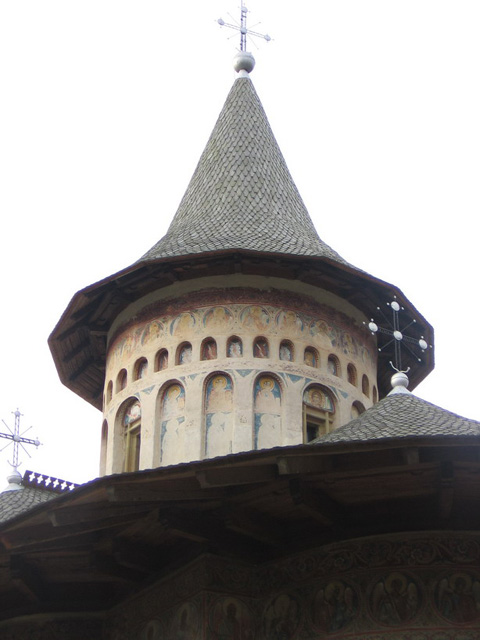 Voroneţ Monastery (ro. Mănăstirea Voroneţ) tower - built in 1488 by Stephen III of Moldavia to commemorate the victory at Battle of Vaslui - Romania
Voroneţ Monastery (ro. Mănăstirea Voroneţ) tower - built in 1488 by Stephen III of Moldavia to commemorate the victory at Battle of Vaslui - Romania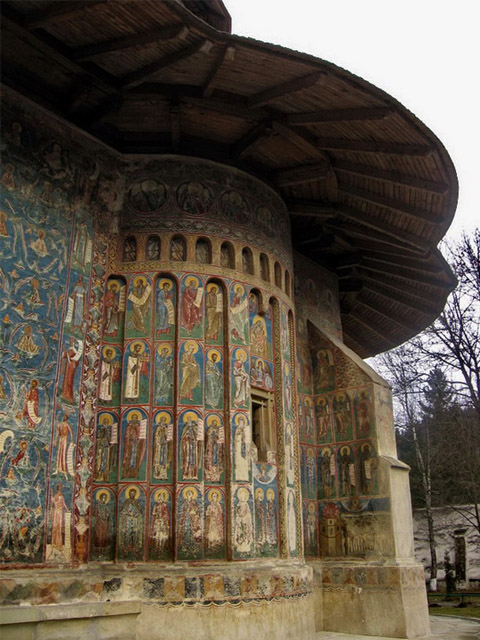 Church of Saint George of Voroneţ Monastery' southern wall, near Gura Humorului, Romania (Romanian: România)
Church of Saint George of Voroneţ Monastery' southern wall, near Gura Humorului, Romania (Romanian: România)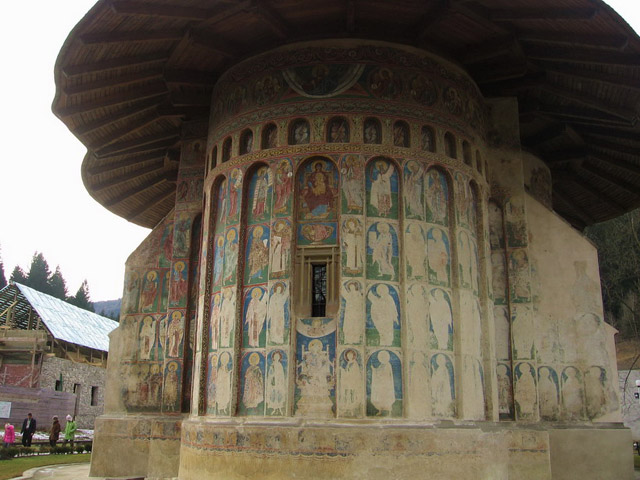 Voroneţ Monastery east painted wall painted in 1547, near the town of Gura Humorului, Suceava County, Romania
Voroneţ Monastery east painted wall painted in 1547, near the town of Gura Humorului, Suceava County, Romania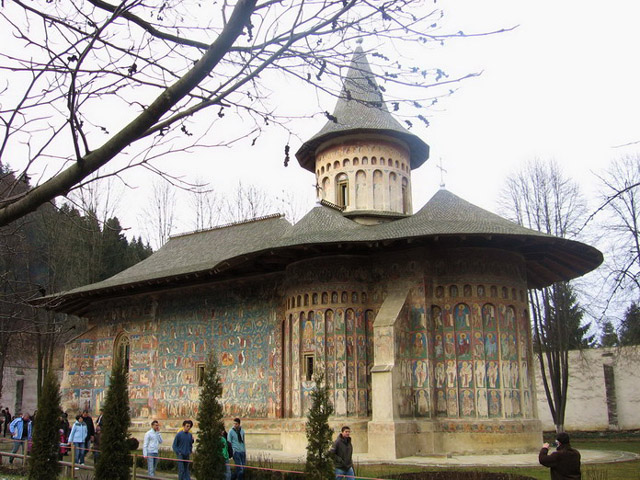 The tomb of the monastery's first abbot, Saint Daniil the Hermit, is found at the monastery. Voroneţ is one of the most famous painted moldavian monastery in Romania, located in Bucovina, near Gura Humorului town. The church was built by Stephen The Great, in 1488 in less than four months, on a triconch plan (with three apses), with a chancel, a naos with its tower, and a pronaos. The small windows, their rectangular frames of crossed rods and the receding pointed or shouldered arches of the interior doorframes are Gothic. The exterior walls - including a representation of the Last Judgment on the west wall - were painted in 1547 with a background of vivid cerulean blue. This blue is so vibrant that art historians refer to Voroneţ blue the same way they do Titian red. Often known as the 'Sistine Chapel of the East', the frescos at Voroneţ feature an intense shade of blue known in Romania as 'Voroneţ blue'.
The tomb of the monastery's first abbot, Saint Daniil the Hermit, is found at the monastery. Voroneţ is one of the most famous painted moldavian monastery in Romania, located in Bucovina, near Gura Humorului town. The church was built by Stephen The Great, in 1488 in less than four months, on a triconch plan (with three apses), with a chancel, a naos with its tower, and a pronaos. The small windows, their rectangular frames of crossed rods and the receding pointed or shouldered arches of the interior doorframes are Gothic. The exterior walls - including a representation of the Last Judgment on the west wall - were painted in 1547 with a background of vivid cerulean blue. This blue is so vibrant that art historians refer to Voroneţ blue the same way they do Titian red. Often known as the 'Sistine Chapel of the East', the frescos at Voroneţ feature an intense shade of blue known in Romania as 'Voroneţ blue'.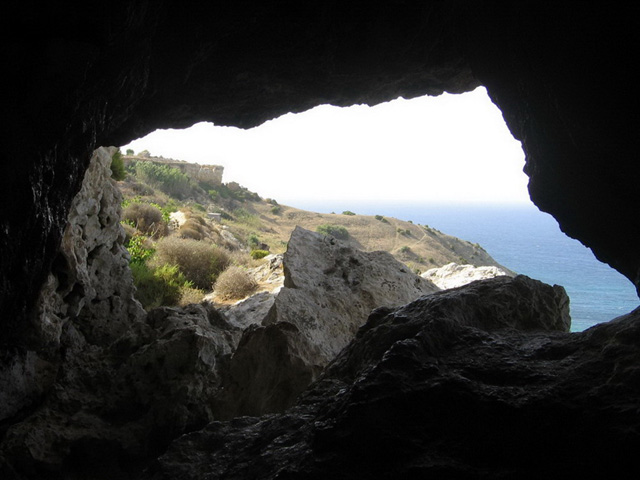 Calypso Cave from inside, Gozo, Malta
Calypso Cave from inside, Gozo, Malta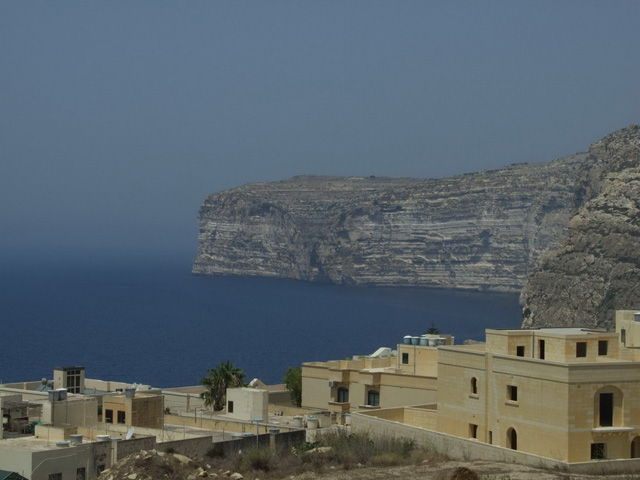 Panorama and rooftops of Xlendi, village in Malta situated in the south west of the island of Gozo
Panorama and rooftops of Xlendi, village in Malta situated in the south west of the island of Gozo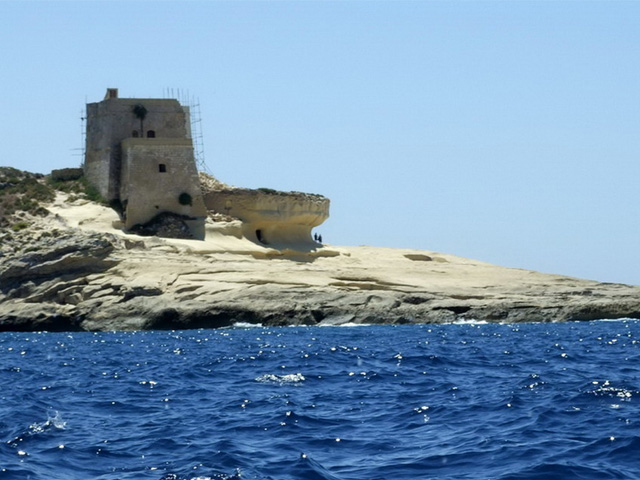 The oldest free standing coastal watchtower in Gozo. It was built in 1650. The main purpose of this Tower was to deny entrance and use of Xlendi Bay to smugglers, pirates and evaders of quarantine. The Tower is 35 feet square and rises to a height of 30 courses. It has an architecturally unique adjunct platform jutting out seawards.
The oldest free standing coastal watchtower in Gozo. It was built in 1650. The main purpose of this Tower was to deny entrance and use of Xlendi Bay to smugglers, pirates and evaders of quarantine. The Tower is 35 feet square and rises to a height of 30 courses. It has an architecturally unique adjunct platform jutting out seawards. 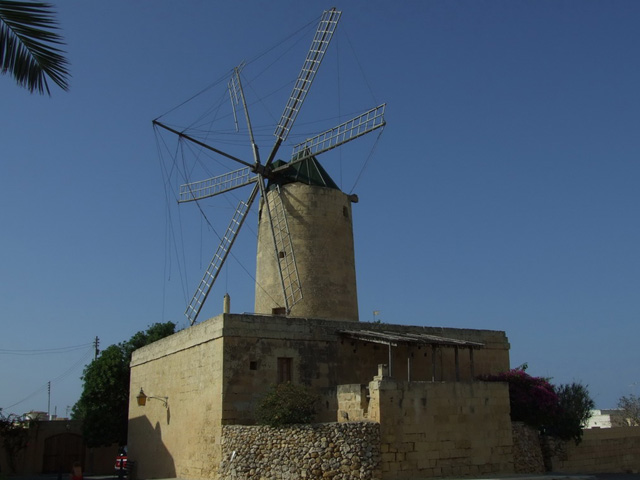 Ta'Kola Windmill at Xaghra Gozo, which serves as a Museum of pre-industrial technology, mainly the production of food
Ta'Kola Windmill at Xaghra Gozo, which serves as a Museum of pre-industrial technology, mainly the production of food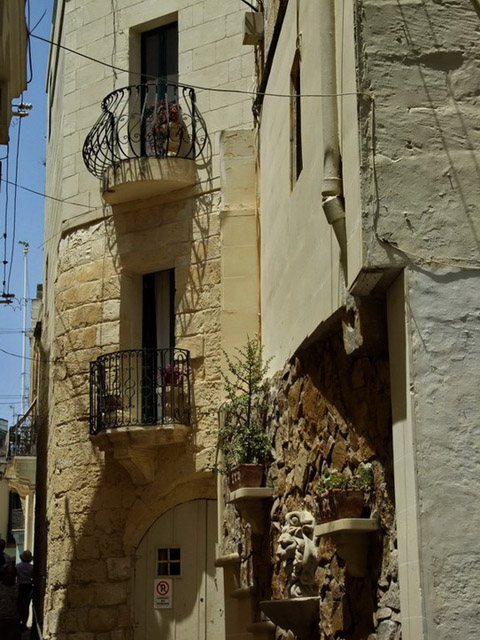 Street in Victoria (Rabat), Gozo island, Malta, Mediterranean Sea
Street in Victoria (Rabat), Gozo island, Malta, Mediterranean Sea Our Lady Of Ta'Pinu Sanctuary, Gharb, Gozo island, Malta
Our Lady Of Ta'Pinu Sanctuary, Gharb, Gozo island, Malta Our Lady Of Ta'Pinu, Gharb, was built between 1920 and 1931, Gozo, Malta
Our Lady Of Ta'Pinu, Gharb, was built between 1920 and 1931, Gozo, Malta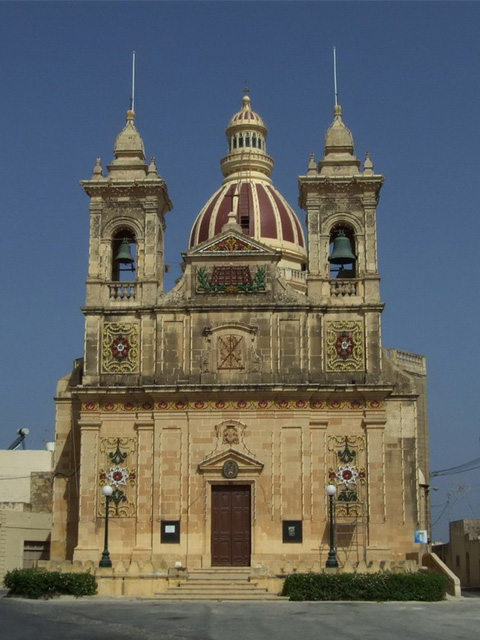 St. Lawrence's Church (San Lawrenz), Gozo, Malta
St. Lawrence's Church (San Lawrenz), Gozo, Malta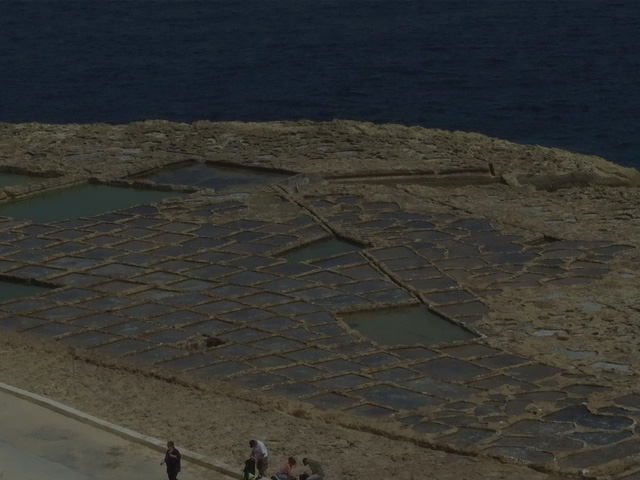 Salt pans at Marsalforn, Gozo island, Malta
Salt pans at Marsalforn, Gozo island, Malta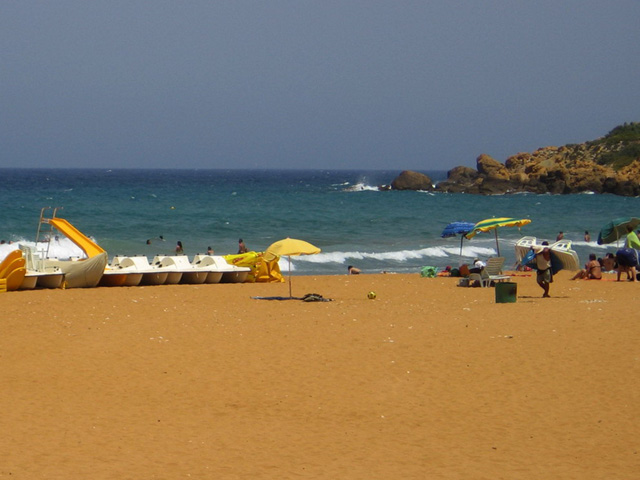 Ramla Bay, Gozo, Malta
Ramla Bay, Gozo, Malta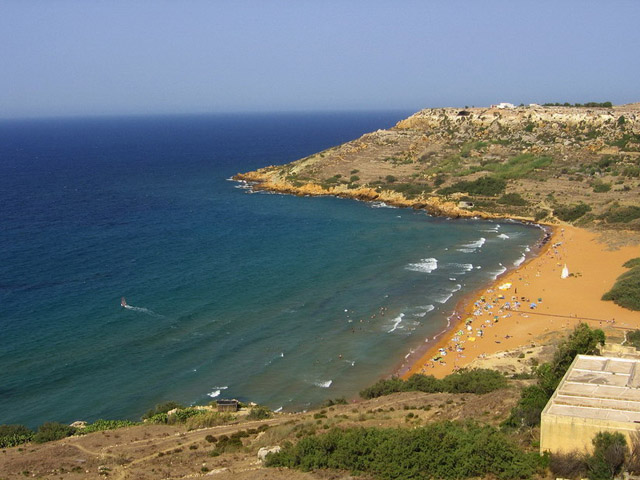 Ramla Bay is located at the bottom of a rich and fertile valley on the northern side of the island of Gozo. The village of Xaghra, located on one of the hills of Gozo, overlooks this valley. Gozo, Malta
Ramla Bay is located at the bottom of a rich and fertile valley on the northern side of the island of Gozo. The village of Xaghra, located on one of the hills of Gozo, overlooks this valley. Gozo, Malta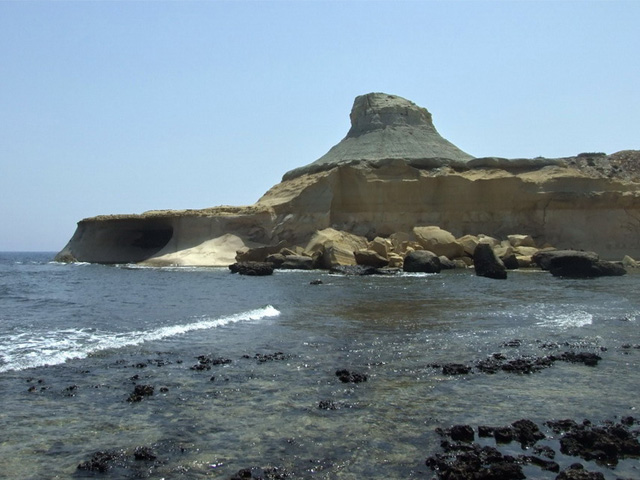 Qolla I-Bajda, Marsalforn Bay, Gozo, Malta
Qolla I-Bajda, Marsalforn Bay, Gozo, Malta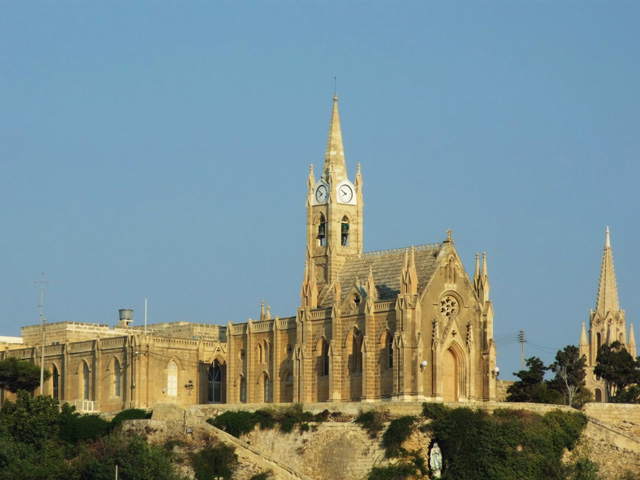 The chapel of our Lady of Lourdes, built on a hill used to be known 'tal-Qortin' overlooking Mgarr harbour. This was built in the year 1888. The work was finished by the Maltese architect Caruana Galizia on a Gothic style. This is a place of pilgrimage for people from all over the island, especially in the days coinciding with the 'visions of Our lady of Lourdes' in southern France. The benefactor of the statue was Carolina Mamo and the artist was Carlo Darmanin - Gozo, Malta
The chapel of our Lady of Lourdes, built on a hill used to be known 'tal-Qortin' overlooking Mgarr harbour. This was built in the year 1888. The work was finished by the Maltese architect Caruana Galizia on a Gothic style. This is a place of pilgrimage for people from all over the island, especially in the days coinciding with the 'visions of Our lady of Lourdes' in southern France. The benefactor of the statue was Carolina Mamo and the artist was Carlo Darmanin - Gozo, Malta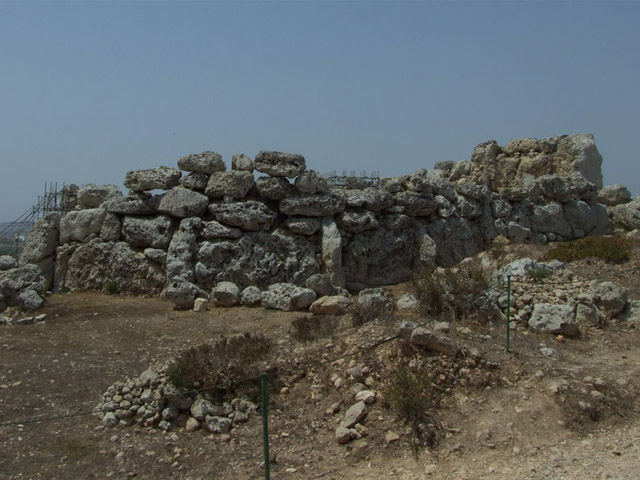 Ggantija Megalithic Temples (Ggantija Temples), the megalithic temples of the Maltese Islands are justly claimed to be the most impressive monuments of European prehistory - Gozo, Malta
Ggantija Megalithic Temples (Ggantija Temples), the megalithic temples of the Maltese Islands are justly claimed to be the most impressive monuments of European prehistory - Gozo, Malta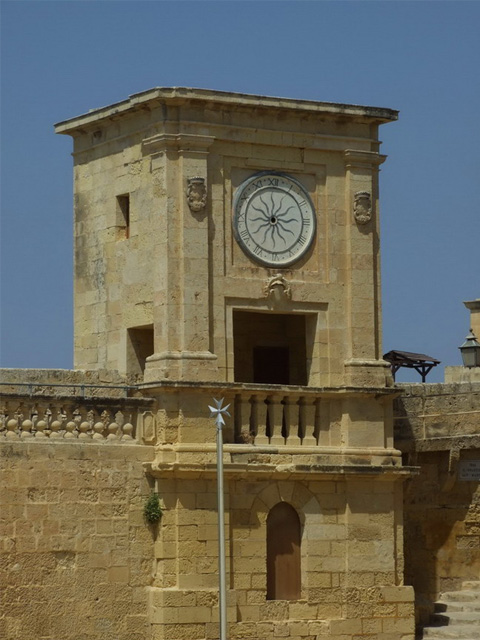 Tower of The Citadella, Victoria or Rabat, Gozo island, Malta
Tower of The Citadella, Victoria or Rabat, Gozo island, Malta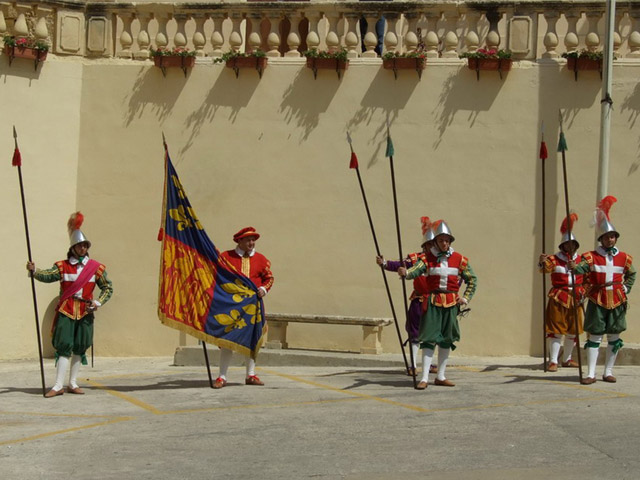 Guards standing in The Citadella, Victoria, Gozo, Malta
Guards standing in The Citadella, Victoria, Gozo, Malta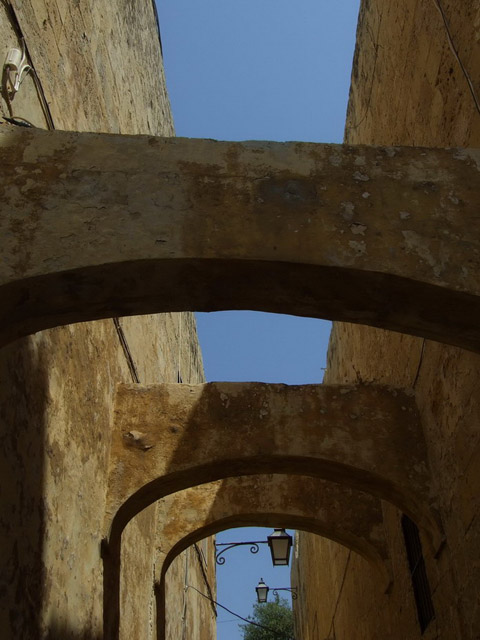 Details of The Citadella, Victoria, Gozo island, Malta
Details of The Citadella, Victoria, Gozo island, Malta